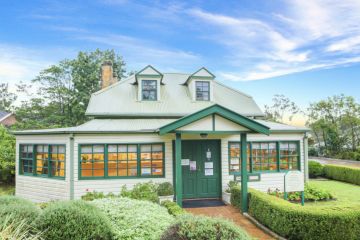What property prices will do as interest rates fall
A potential spate of rate cuts looks set to push up property prices as buyers are set to be able to borrow more money, but any price growth will be limited by affordability constraints.
NAB this week forecast the official cash rate to fall to 2.6 per cent within 12 months, and is the most bullish of the big four banks. Other major banks expect the official cash rate will sit at 3.5 per cent by the end of 2025.

Tim Lawless, Cotality (formerly CoreLogic) research director, said lower rates would likely provide some stimulus for housing markets.
“That’s what we’ve seen historically. Lower interest rates tend to obviously improve serviceability and access to credit. They then boost sentiment as well,” he said.
The recent election could also provide a boost, said BresicWhitney chief executive Thomas McGlynn.
“The fact that a majority government brings stability politically to the country … and then if we start to see interest rates come down dramatically, I think those two things combined will bring energy to the property market,” he said.
While prospective home buyers could see more certainty and increased borrowing power, they may also see higher prices from a buoyed market.
“I think as we see interest rates coming down, there’s a pretty strong chance we’ll see housing prices rising,” said Lawless, adding they’ll probably rise faster than currently, which “is a fairly mild rate of growth”.
Most of Australia’s capital cities remain below record highs, on Cotality data. The median dwelling value in Sydney is down 1.1 per cent from its peak, while Melbourne is down 5.4 per cent. Brisbane, Adelaide and Perth are the only cities where the dwelling market is at a record high.
Wakelin Property Advisory director Jarrod McCabe said interest rate cuts don’t tend to have an immediate impact but a consistent drop in rates over time does increase competition and demand.
He has already seen an increase in interest from first home buyers, who can be more price-sensitive than other buyers.
McCabe thought rate cuts could have a more significant impact in Melbourne’s market, where prices have been subdued, than in some of the other cities that have been rising.
“I think right at the moment’s a really good time to be getting into the market before things start to kick,” he said.
Buyers should try to purchase “on their own time frames”, Lawless said, but for those buyers in the right financial position, the “timing is probably pretty good at the moment”.

“It’s highly likely we’d see values rising further from here,” he said.
Still, Lawless said it was unlikely the property market was “moving into a really strong growth phase” due to affordability issues.
“I think it’d be very hard for housing prices to rise aggressively from here, given how stretched housing affordability is,” he said.
“If we did start to see housing markets responding really aggressively to lower interest rates, who’s to say we couldn’t see credit policies being tightened.”
Morningstar market strategist Lochlan Halloway said, “All else equal, lower rates should support house prices.
“However, if rates are cut sharply, it’s often in response to a weakening economy – marked by slowing growth, lower inflation and rising unemployment. These same forces can put downward pressure on housing demand and prices,” he said.
While experts expect rates to fall, uncertainty remains about how low they could go.
“I think we are in a time where there is a bit of instability in global economic conditions, and that will have an impact on what happens,” McGlynn said.

NAB expects the Reserve Bank to cut rates by 50 basis points in May, followed by 25 basis points in July, August, November and February. The other three major banks’ expectations of cuts to 3.5 per cent are in line with the Reserve Bank’s estimate of the neutral cash rate.
SQM Research managing director Louis Christopher said if NAB’s forecast for the cash rate came to pass, it would be stimulatory to housing prices.
He thought strong population growth and the expansion of the federal government’s first home buyer assistance would also spur demand.
“There are three prime factors there, and any one, or all of the above, will most likely drive housing prices further upwards over the course of later 2025 and into 2026,” he said.
He preferred to follow the money markets’ forecasts, which are for 1 percentage point of cuts over the next 12 months, and he expects national housing prices to rise between 6 and 10 per cent this year.
“It’s a good time to do your research,” he said. “I don’t necessarily believe that timing the housing market in terms of a purchase is the smartest way to go. Housing or property is a longer-term asset class.”
We recommend
We thought you might like
States
Capital Cities
Capital Cities - Rentals
Popular Areas
Allhomes
More









